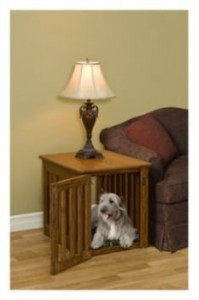 The entire purpose of crate training your dog is to provide your dog with a safe place he can go when he feels frightened, wants to be alone, or needs to sleep, as well as an efficient way to help house break a puppy.
The entire purpose of crate training your dog is to provide your dog with a safe place he can go when he feels frightened, wants to be alone, or needs to sleep, as well as an efficient way to help house break a puppy.
A dog crate should never be used as a “prison” to punish your dog for bad behavior.
Crate training takes a bit of time, effort, and patience, but it is well worth it in the end when you see that your pet has a comfortable den, and that you have a safe way to contain him should the need arise.
Like with any other type of dog training, crate training your dog is best done in small stages so that your dog slowly learns what is expected of him.
When crate training a dog, it is best to use a metal or heavy duty plastic crate and leave that beautiful dog crate furniture until your dog is completely crate trained.
Why? Because most dog crate furniture is expensive and it can easily be ruined by an anxious dog who is locked up with no means of escape.
Here is a brief guide on how to crate train your dog in 6 easy steps:
Step One: Introducing The Crate
Whether you are trying to crate train a puppy or a full grown dog, the worst thing you can do is simply put the dog into an unfamiliar crate and close and lock the door.
You want your dog to see his crate as a safe haven not a prison, so a slow and gentle introduction to the crate is your best way of accomplishing that.
Begin by placing the crate in an area of the home slightly out of the way, but where you can be present.
Kitchens are often a good area to introduce your dog to a crate for the first time.
Prepare the crate in advance by placing in a pad, and a couple of your pets favorite toys to give the crate a more inviting look and feel.
Either latch or prop the door open so it won’t accidentally close should your dog take the hint and begin exploring the crate.
Dogs are curious animals, and a crate will remind them of a den that their not to distant ancestors use as a means of protection.
So chances are that your dog may well be willing to explore the crate on his own, going in and out, and even lying down to play with one of his toys.
However, if your pet seems reluctant to begin exploring the crate on his own, you can encourage exploration by placing a small treat just inside the door of the crate.
Once your canine has eaten the treat, if he still seems reluctant to enter, place another treat just a little further inside and continue doing so until your pooch either completely enters the crate, or refuses to go any further to get the treat.
At which stage the first lesson of the introduction should end and you should wait until later in the day or the next day to try again.
However, do leave the door open so that if your dog should change his mind on his own, and decide to explore, then he has free and open access to go in and out.
Step Two: Prolonging The Time Your Dog Stays In The Crate
Once your dog goes clear into the cage, either to get treats or on his own, then it is time to prolong the time he spends in the crate if he still is not choosing to do so on his own.
The best way to do this is to place his food bowl inside at feeding time.
Do not feed him elsewhere so that he realizes that if he wants to eat he will have to do so inside the crate.
Still keep the door open so that your dog can leave, either between bites of food or immediately after he has finished eating if he so wishes.
Step Three: Letting Your Dog Adjust To A Closed Crate Door
Once your dog is comfortable enough with the crate to eat his entire meal without feeling the need to leave the crate before he is finished, it is time to move to the next step in the crate training process.
Closing the door.
Wait until your dog begins his meal and then quietly close and latch the door.
However, you should remain close by so that the moment your pet finishes the meal and comes to the door, you can open it and allow him out.
Simply by accustoming him to the door being closed, he won’t see the closed door as a threat and he should quickly accept the closing of the door every time that he eats.
Step Four: Longer Periods In The Crate With The Door Closed
The next step is going to be slightly trickier, as you will need to leave the door closed for longer and longer periods once your pooch has finished his meal.
During this part of the crate training process, you should remain in the room and offer words of encouragement if your dog appears agitated.
However, do not open the door of the crate until your dog is quiet and calm as you don’t want to send him the message that barking, whining, or digging at the crate will earn him freedom.
Over the next several days or even a week or two, extend the amount of time you leave your dog in his crate.
Again, make sure that he has some toys to play with and to chew in order to help calm him down and keep him from becoming bored.
Step 5: Leaving Him Alone In The Crate
Once your dog is used to spending some extended time in the cage with the door closed, then it time for you to leave the room, leaving him alone in the crate.
Don’t make a huge deal about leaving, but don’t sneak away either.
Simply shut the door and walk out of the room and remain gone for 1 to 5 minutes the first time, and gradually increase the time you are out of the room to 20 or 30 minutes.
Again, don’t pay attention if your dog barks or whines and only allow him out when he is calm and quiet.
This way, he will learn that unacceptable behavior won’t win him his freedom and it will make it easier for him to remain quiet when he is shut in his crate.
Step 6: Completing the Training
Once your dog has learned to remain quiet in his crate and entertain himself without indulging in any destructive behavior, your crate training is complete.
This is the time that you can now change to a more furniture friendly dog crate, though you may have to spend a couple of days renewing the training until he gets used to the new crate.
After this, your dog is likely to seek out his crate whenever he wants to be alone, even when you are home and the door remains open.
Do keep in mind that if you are planning on using a crate mainly for housebreaking purposes, the training will be somewhat different.
Your puppy will need to be placed in the crate unless you can carefully watch him or you will have to delay house breaking until he is crate trained.
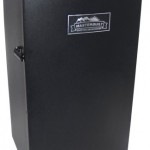
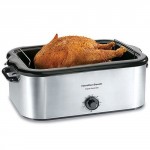
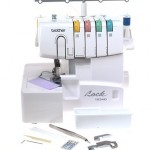
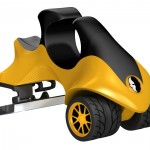




 Facebook
Facebook Pinterest
Pinterest Twitter
Twitter Google+
Google+